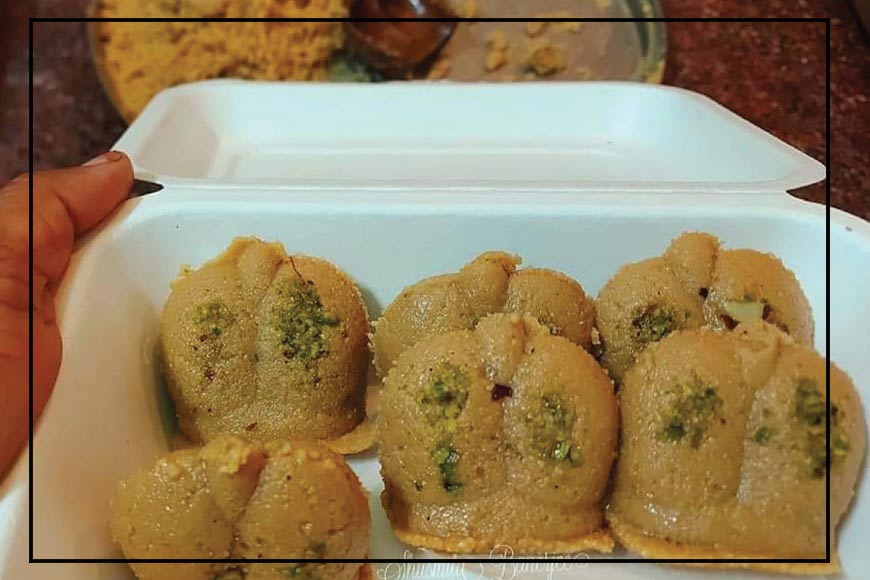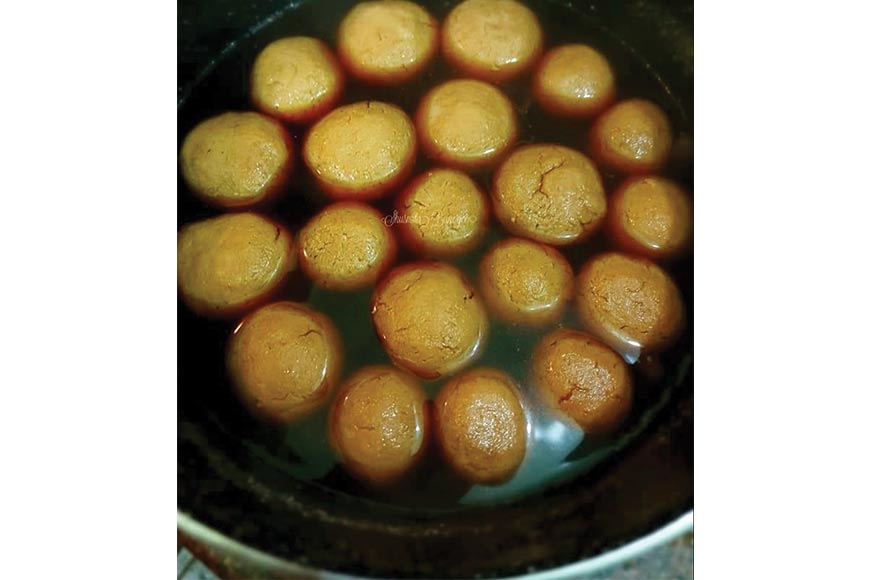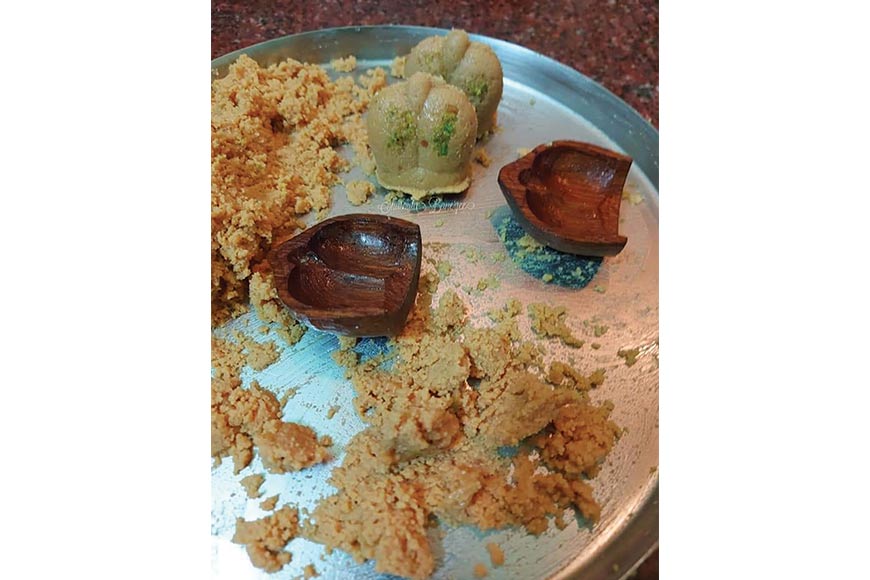Winter is incomplete without the Nolen Gur and Pithe

Ma used to make Elo Jhelo every winter morning and we sat patiently to pack them along with the coconut laced Patishapta in our tiffin boxes before leaving for school. We had to show to our non-Bengali friends what were so special about Bengal’s pithe and that aroma of new jaggery or nolen gur. Friends would just go mad and savour them in minutes.

Fall winter with the arrival of new jaggery, it’s the customary pithe (a type of rice cake) time in Bengal. It is during this time, people get reminded of the age-old varieties of Pithe, Pathishapta made by grandmothers at every household. West Bengal being the largest producer of rice in India, the festival sees dominance of rice products, post its winter harvest. A range of sweet dishes are prepared with ground rice in various forms around this festival. The ‘Bong Connection’ with the pithe cannot really be articulated through any words. Even while writing on this topic, one can feel the aroma of pithe especially those mixed with Notun Khejurer Gur (new jaggery). That’s the nostalgia and recall of Pithe Puli.
But with changing times, Patishapta, Dudh Puli, Chandrapuli etc have found their homes in the decorated racks of local sweet shops, instead of being churned in our homes. Time is a big constraint, and in the process many recipes and pithes are getting lost.
But with changing times, Patishapta, Dudh Puli, Chandrapuli etc have found their homes in the decorated racks of local sweet shops, instead of being churned in our homes. Time is a big constraint, and in the process many recipes and pithes are getting lost. However, Take for example Chitoi Pithe, that was served hot and consumed immediately to enjoy the actual taste of it. Though the taste of pithe is not much known to the new generation even the names sound strange to them, but there are people who still carry on the legacy of making different varieties of pithe or even Nolen Gur er Rosogollas and Sandesh at home as a passion and to introduce the younger generation to their grandmother’s recipes.
 Shusmita Banerjee, Headmistress of Young Horizon school, remembers her mother and grandmother's recipes of making pithe and patishapta, that she makes herself these days and mesmerizes everyone. She puts in: “Firstly, there are an endless number of pithes. We have Gokul Pithe, Nakshi pithe, special ones which are made in clay utensils. Then, there is Chitoi pithe. We have bhapa pithe, bhapa puli, chushi and the number is endless. I have seen my mother and grandmother making them in my childhood. Just thought of carrying the legacy forward,” said Banerjee.
Shusmita Banerjee, Headmistress of Young Horizon school, remembers her mother and grandmother's recipes of making pithe and patishapta, that she makes herself these days and mesmerizes everyone. She puts in: “Firstly, there are an endless number of pithes. We have Gokul Pithe, Nakshi pithe, special ones which are made in clay utensils. Then, there is Chitoi pithe. We have bhapa pithe, bhapa puli, chushi and the number is endless. I have seen my mother and grandmother making them in my childhood. Just thought of carrying the legacy forward,” said Banerjee.
Shusmita said that we all should preserve this art as it is fast dying. “This art form is dying. It’s our heritage. We cannot afford to let go of it. Now most of the raw materials needed to make pithe are easily available in the market but I still use and would suggest everyone to make it in traditional form.
Asked about marketing the products as all of the varieties are not available in the market, to which she says, she sells it amongst her family and friends in a smaller format to give them the taste of something that is no more found or made. “I do as much as I can in my domestic setup. Since I am a headmistress as well cannot give full time on just cooking. My pithes are so popular that all my friends keep on asking me to make some for them. I even bake cakes for my colleagues in school including the Principal who orders cakes from me. Many of my friends love the Gondhoraj cake I make,” smiles Shusmita.

Speaking a bit more on the topic, Shusmita said that we all should preserve this art as it is fast dying. “This art form is dying. It’s our heritage. We cannot afford to let go of it. Now most of the raw materials needed to make pithe are easily available in the market but I still use and would suggest everyone to make it in traditional form. Grated jaggery and coconut are available in pouches but the taste doesn’t come proper if you use them. I use the traditional way. Though it is a bit time consuming but the end product is nothing but the best,” added Banerjee.
She also mentioned that Bhapa Pithe has to be made individually and the time taken for each of the pithe is approximately 10 minutes. “We have to place a cloth over a strainer in boiling water then slowly one by one we have to make the pithes with grated patali gur and coconut. It is damn tasty. None can resist it, trust me,” smiled the headmistress.
Asked on the pricing to which she said that all her products are moderately priced depending on the quality of the raw material. “None of my products are that expensive that one cannot afford. I don’t think that one should compromise on quality. At least I don't. The quality of gur is very important for both pithe and patishapta. An expert eye always knows the best and depending on the cost of raw materials I fix the price,” signed off Shusmita.
To place your orders, contact : Sushmita Banerjee: 9830147656










